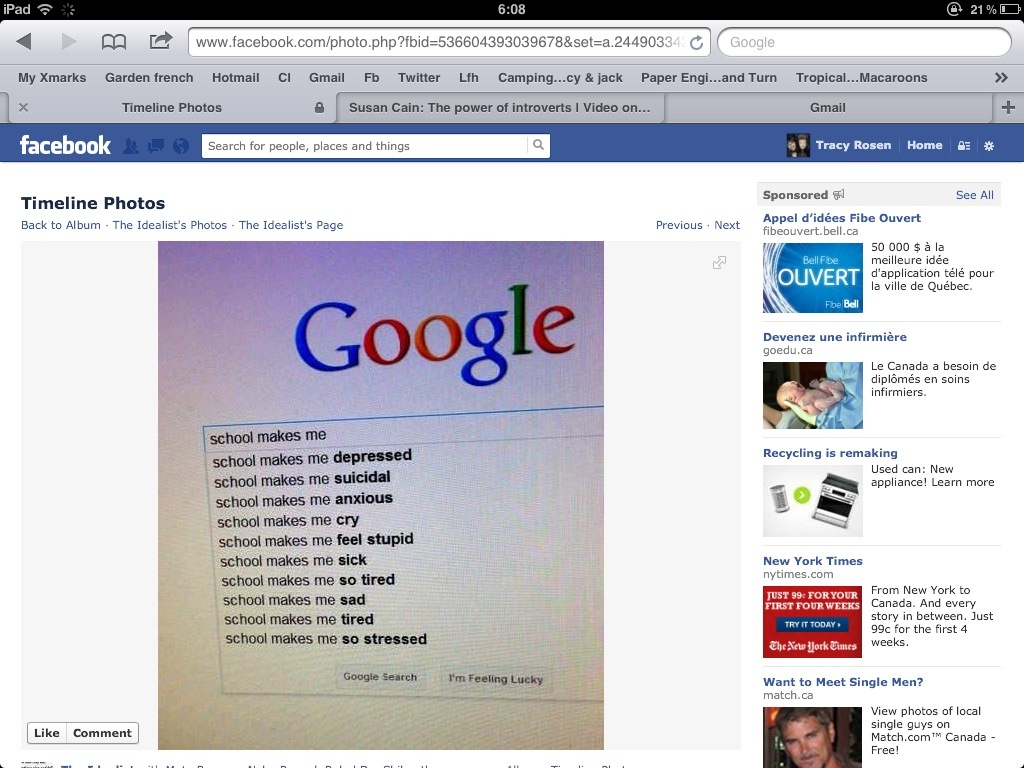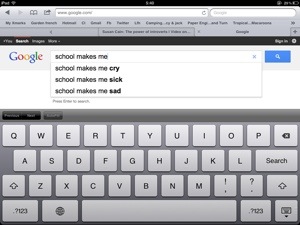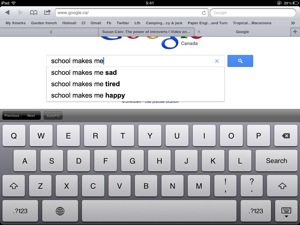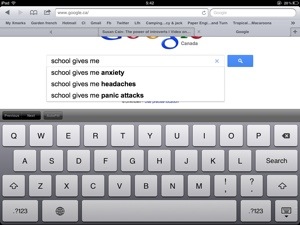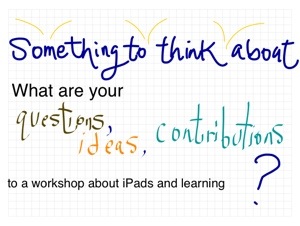I have a dirty little secret to share. Actually, I have a few.
Dirty Secret #1
I don’t think video lessons are all that.
When we talk of flipped classrooms we talk of having video that students can watch out of the classroom to free up clasroom time from the shackles of lecture and allow application to reign in its stead.
Yawn. If I were forced to watch a bunch of video on certain lecturey topics, I think I’d quit school.
Yesterday I was excited to see a link to a recipe on some website for flourless pecan brownies. Mmm. Mmm. How disapointed was I to end up at a video that was going to show me how to make them. All I wanted to do was look at the ingredient list. I didn’t bother to watch the video. Didn’t want to invest the time if I wasn’t sure it was what I needed. Had there been a written recipe, or even just the list of ingredients, I may have watched it.
A number of years ago, I had to review video to add to a list of resources for professional development. I wanted to write little blurbs so teachers would know if they were worth watching. The videos ranged from 5 to about 30 minutes in length. It didn’t matter how short or long they were. I lost focus. With some it was because they were just boring video, with others, though, that was not the case. I needed to be doing something in order to maintain focus. I needed to keep my hands busy, to maintain an optimal level of physical distraction so that my brain wouldn’t search for it elsewhere. So I started to create small posters to hang in my office. Writing and colouring allowed my brain to focus on the video.
Dirty Secret #2
I believe in differentiation but not because of learning styles.
We need to differentiate our curriculum to meet the needs of the learners in our room. Full stop. Learning needs to make sense to those learning and I believe it makes different sense for different learners. NOT because of a perceived personal sense of how one learns but because of a very real sense of why mixed in with solid research-based evidence about how the more ways we can integrate new ideas and concepts into our systems, the better the learning will take hold and actually change how we think – after all, isn’t that why we learn?
How many students have I met who have experienced years, decades (I now work in Adult Education) of failure, of thinking themselves inadequate because they were unable to grasp a concept or get an idea after years of being taught it in the same way (think Math lecture, History textbooks, first language inquiry processes…). Who, when they are delivered the same idea in ways that include reading, watching, listening, talking, and doing finally get it. When I think of these students I feel a deep sense of sadness.
So how do we differentiate in this way? Offer content in a variety of ways – available in the classroom and outside of it (flipping in and out). Sure. Offer your video but add to it text, graphics, out of class or back-end (chats that may happen in class but behind the scenes) conversation, anything that can a) present the material using as many different modalities of learning and b) allow for students to choose the one that they need at a particular moment in their learning. Maybe at first, they’ll watch the video but when they come down to applying the concept, they may just need to scan through a text or look at a chart to get to a specific point. Or maybe the video watching will happen at the end of the student’s data gathering process, to ensure understanding.
The main focus of differentiation for me has to do with loving my students. That and the fact that, as an educator, the action of lecturing content bores me to no end. I enjoy talking in front of people, presenting ideas that excite me. I think that does have a place in our classroom as well. Students need to see excitement. It’s a matter of communicating it authentically.
Dirty Secret #3
Yeah, I still don’t believe in learning styles.

